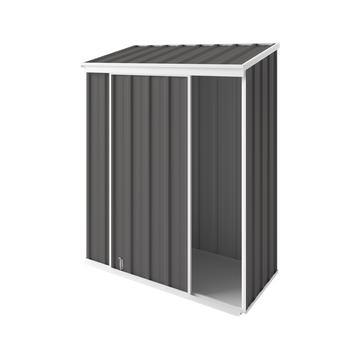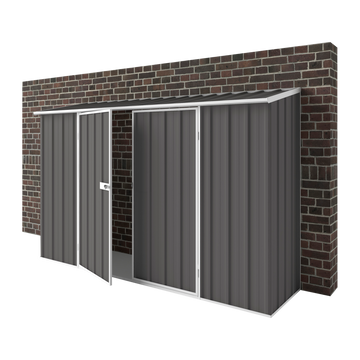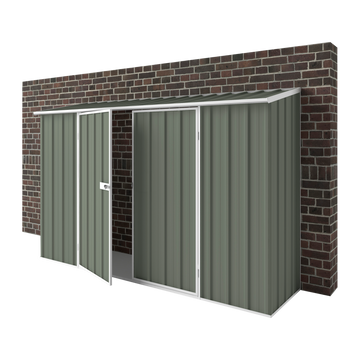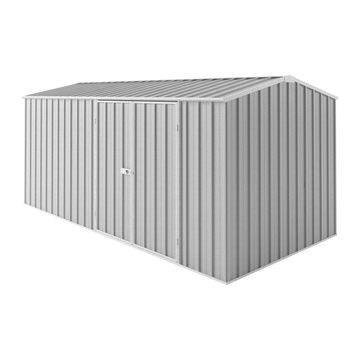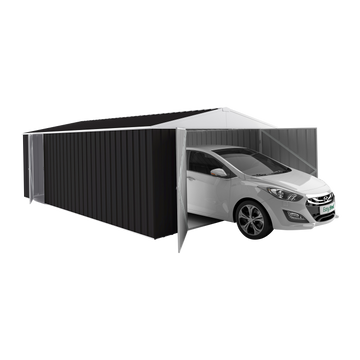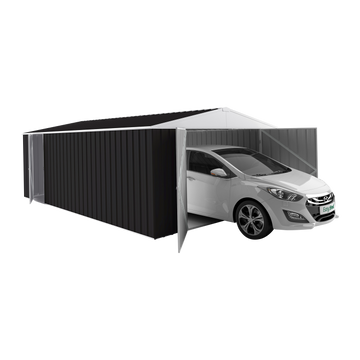We may find ourselves in the beginning of winter here in Australia, but that doesn’t mean you can’t start thinking about your spring garden. In fact, it’s never too early to start planning your garden, and growing seedlings in your shed is the perfect jumpstart to a successful spring growing season.
If you’ve never grown seedlings inside during winter, you’re in the right place! We’re going to talk about everything from the best plants to start growing indoors to best practices for successful growth to transplanting when it starts to get warmer outside.
There’s a lot of ground to cover, so let’s jump right in.
But first, a note on climate
Obviously, Australia is a huge country with many different climates. There are plenty of government resources on climate, including The Bureau Of Meteorology or if you're more of a visual person try Your Home , to help you understand the climate of your region. Someone living in Melbourne is going to have much different growing needs than someone living in Darwin. Whatever region you live in, though, you can still grow your seedlings in your backyard shed - what you plant just may be a bit different.
Basically, if you’re in a warm climate that doesn’t get winter frosts, you can skip Steps One and Two and instead choose pretty much whatever plants do well in your climate. For warm tropical climates, you might go with peas, cabbage, lettuce, onions, carrots, beans, and beetroots.
For colder climates, you’ll have to pay more attention to the kinds of plants that will thrive in cooler temperatures. And, you’ll have to plan out when you should start growing your seedlings to align with the last winter frost. We’ll cover that in Steps One and Two below.
Finding the right seeds
There are some plants that will thrive best in early spring, which means that you should actually be growing them from seeds during the colder winter months. After all, when you buy these early spring plants in September, a nursery has already done the work of growing the seedlings in their greenhouse. You can easily do the same thing in your backyard shed.
Here are a few of the plants that will do well to be sprouted in winter:
- Brussel Sprouts
- Lettuce
- Cauliflower
- Eggplant
- Pansies
- Silverbeet
- Tomatoes
- Peppers
- Asparagus
- Rhubarb
- Peas
- Radishes
- Herbs
Because seeds are so much cheaper than buying seedlings in early spring, you can really do some fun experimenting here. You might buy more seeds than you would ever be able to actually fit in your garden and then plant only the ones that have grown most successfully during the winter.
The others? Well, as long as they’ve sprouted, they make great gifts for friends and family.
Plan out your timeline
Once you’ve ordered the seeds for your backyard shed seedling project, you’ll want to pull out a calendar and start thinking about timelines. You don’t want to start growing you seeds to early, otherwise, you’ll get seedlings that will start to outgrow their containers before the temperatures rise enough to be able to plant them outside.
In general, you’ll want to start growing seeds around 6 weeks before the last frost. Every year is different, of course, but just go off of the yearly average.
Get your materials together
In order to grow seeds, you’re going to need to gather some materials for your backyard shed:
- Seed raising mix
- Seed pots or a seed starter box
- A watering can or spray bottle
- A seed growing notebook or journal
- A growing light - this may not be necessary if your backyard shed gets a lot of natural sunlight, but keep in mind that most seedlings require between 6 and 8 hours of sunlight per day. In winter, that can be a difficult with natural light, alone.
Make sure that you label everything so that you know which seeds you planted in which containers. Otherwise, you may find yourself getting confused about your watering schedule.
If you’re keeping a seed journal, this is going to help you keep track of when you started growing your seeds, how much water you gave them, and when you should expect to plant them outside. It’s also a good place to hold onto the seed instructions from the back of the seed package. That will tell you crucial information about how to prepare the seeds for growing and when they’ll be ready for planting outside.
Proper care and maintenance
When you’re first starting out with seed growing, be prepared to give your seedlings some daily care. The seedlings are very fragile in these first 6 weeks, so you’ll want to check on them regularly.
One of the trickiest parts of caring for seedlings is knowing how to water them correctly. Too little water and they won’t germinate. Too much and they’ll drown. What you want is a soil that is constantly damp, but not wet, and that can be a hard thing to achieve.
Some gardeners have found that it’s best to sit the seed pots in a plastic tray with a few centimetres of water in the bottom. That way, the soil will soak up the appropriate amount of water. But, you can also achieve the same effect with a spray bottle or light watering from a watering can.
Another good tip is to cover the seedlings with a transparent plastic cover. This will keep the seedlings moist and warm while they grow. Just make sure that you air them out occasionally to avoid mould buildup.
Planting your seedlings in spring
Exactly when you plant your seedlings will depend on the instructions on the seed package.
But before you do so, there’s a method called “hardening off” that can help your seedlings prepare for their new life outside. When the weather starts to get a bit warmer, simply take your seedlings outside for a portion of the day. Keep an eye on their moisture levels because the natural air can dry them out, and never leave them outside overnight. The couple of hours of exposure to the outside air will help to harden the plants to their upcoming transition.
And that’s it!
Now, it’s still pretty early to start growing seedlings in your backyard shed, but now is a great time to begin thinking about the seeds that you want to grow. If you don't have one already, now is the time to find your perfect garden shed . Also, start gathering your materials early so that you’ll be prepared when you hit that 6 weeks until spring date.
Happy indoor gardening!





